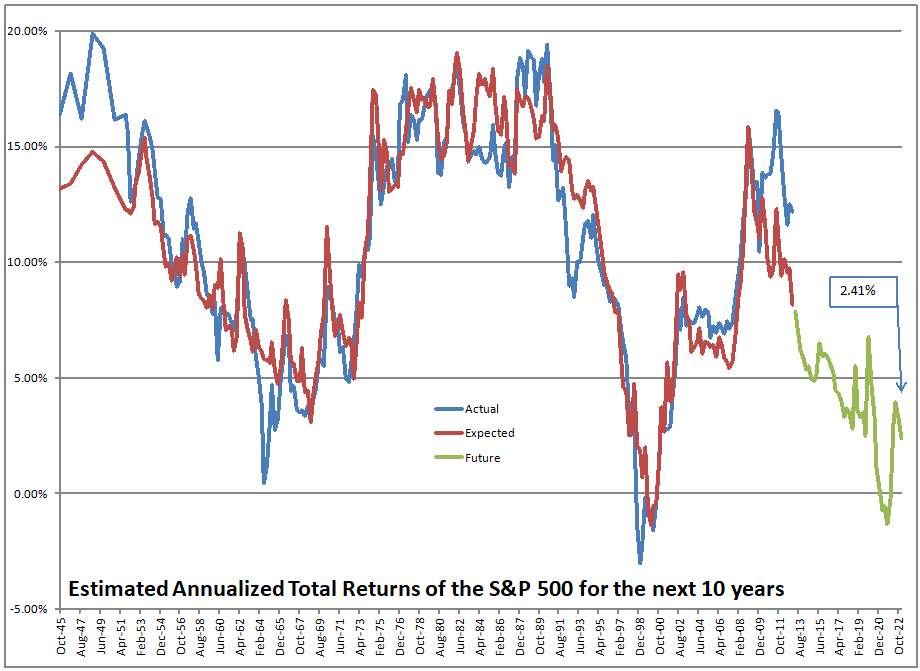Image Credit: Aleph Blog || Has the return on assets for public equities permanently risen?
At March 31st, 2023, the S&P 500 was priced to return 2.41%/year over the next ten years. Given the rally since then, that return has shrunk to 0.49%/year. Currently the 10-year Treasury yields 3.76%. In investment grade corporates, you could earn more than 5% with considerably lower risk.
But, maybe it’s different this time. Yes, I know the danger of the phrase. What if AI increases total productivity of assets and labor by 1%/year on net, permanently? Will companies make more money as they need fewer smart people to do the same amount of intellectual work? Or, will we reach a new equilibrium as the smart people who are laid off start using AI to create totally new businesses, or create even leaner competitor businesses that eat into the profits of those slow to adapt?
Really, I don’t think AI will permanently increase productivity. The system should adjust and things should remain mostly the same.

Image credit: Aleph Blog
The graph above shows what the outcomes have been when the share of investor funds held in equities has been as high as it is now, 49.0%. (Range: 21.9% — 52.7%, average 35.6%) Returns have typically been poor.
So, maybe buy the 10-year investment grade bonds. Inflation is going down, and the US government can’t finance all its debt if rates rise too much. Bonds are a real alternative now.
One last note: the estimated rate of return over the next ten years more than you would ordinarily expect as the data series underlying this model made significant revisions to past data values.
Anyway, be cautious. Bond yields have risen, equity yields (E/P) have fallen. This rally is more speculative than most think… momentum blinds many people to stretched valuations. Unless, we are genuinely in a new era. Which I doubt.


Thank you – always appreciate these updates! A good reminder not to chase. . .
Glad fort the headsup on the data revision and the re-estimation, because when I last ran your weights I was still getting negative returns. You may want to try adding in CAPE excess spread – may be spurious overfitting but it seems to improve the estimate a bit. Love this work, been following it forever, and its is both intuitive and grounding.